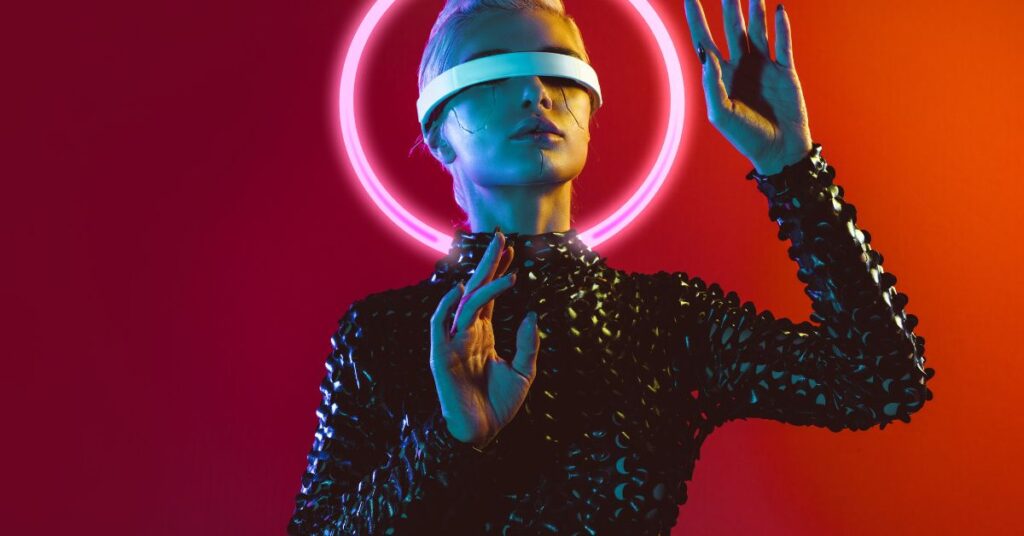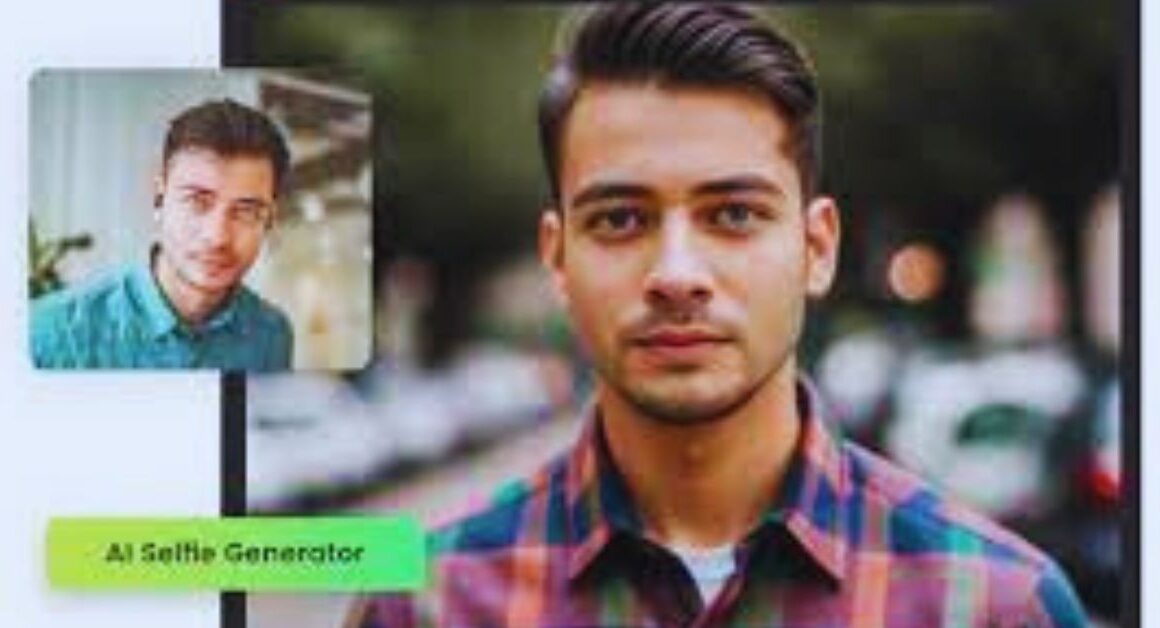Table of Contents
What is an AI Selfie Generator?
An AI selfie generator is a type of mobile or web application that utilizes artificial intelligence to transform regular selfies into unique, customized photos. Powered by neural networks and deep learning algorithms, these apps can apply a range of filters, effects, and edits to selfies in just seconds.
Some of the most popular capabilities of AI selfie generators include turning selfies into artworks mimicking famous painters, automatically applying makeup and touch-ups, and even generating animated selfies.
The AI evaluates facial features and lighting to intelligently edit selfies according to the user’s preferences.
How AI Selfie Generators Work
AI selfie-generator apps rely on deep learning and neural network models to power their intelligent editing capabilities. They are trained on enormous datasets of hundreds of thousands of photos to develop an understanding of human faces and aesthetics.
The AI examines the input selfie, detects key facial features, and then suggests edits and filters it determines will be aesthetically pleasing, sometimes offering the user options to choose from. The app applies the transforms to the selfie instantly, outputting a revamped image.
Some apps continue to refine and iterate the selfie to optimize the final result. The entire process typically takes just seconds, allowing users to quickly transform selfies in one tap.
The Evolution of AI Selfie Tech
The first primitive AI selfie editors emerged around 2016, offering basic filters and beauty effects. However, the technology has evolved tremendously since then to enable much more sophisticated edits.
In particular, the emergence of generative adversarial networks (GANs) revolutionized AI photo editing. GANs pit two neural networks against each other to generate realistic artificial photos and enhancements.

Apps like Face App went viral by using GANs to power transformations like making users look older or younger.
Today’s AI selfie editors utilize cloud computing and AI model optimization to deliver instant neural network-powered editing right on users’ smartphones. The results continue to get more and more realistic and difficult to distinguish from untouched photos.
The Appeal of AI Selfie Generators
There are a few key reasons why AI selfie generator apps have become so popular:
- They allow anyone to edit their selfies to perfection, regardless of photography skills. The AI handles the retouching.
- The transformations are fun and whimsical, letting users explore different looks and aesthetics.
- Sharing AI-enhanced selfies on social media can earn likes and reactions.
- The apps are easy to use, often only requiring a single tap to apply changes.
- AI selfies help some users gain confidence and feel better about posting photos of themselves.
- The technology behind them is impressive and futuristic.
Concerns and Controversies
AI selfie editors have also sparked some concerns:
- Heavy reliance on apps to look flawless in photos can promote unhealthy beauty standards.
- AI selfies present an artificial version of users that mismatches reality.
- Deep fake technology could be abused to generate convincing fake profile photos.
- Apps may apply changes users are uncomfortable with or that don’t match their identity.
- Persistent editing of selfies may exacerbate body image issues, especially for younger users.
- AI photo editors often lack transparency about how they utilize users’ photos.
The Future of AI Selfies
AI selfie editors are likely to become even more advanced and ubiquitous. A few potential developments include:
- Video selfie editors transform footage in real time using AI
- 3D avatars generated from selfies that users can customize
- More focus on inclusive beauty and diversity in selfie AI
- Integration directly into smartphones, removing the need for separate apps
- Personalized selfie AI that learns users’ preferences over time
- Stricter regulation over potential risks like deep fakes and data privacy
But for now, AI selfie apps represent an easy way for users to get the perfect shot and explore their creative side through AI-powered photo experiments. As the technology progresses, so too will the photographic possibilities.
Creating Your Own AI Selfie
Now that you know the basics behind AI selfie editors, let’s look at how you can make your own artificially intelligent selfie creations:

Choosing an AI Selfie App
There are numerous AI photo editor apps to choose from, each with different strengths and focuses, including:
- Face App – One of the most popular selfie editors, with filters for age, smile, and more.
- B612 – Features fun stickers, artistic filters, and beauty effects.
- Snow – Transforms selfies into photos with cinematic lighting and effects.
- Meitu – Focuses on beautification, touch-ups, and makeup simulation.
- Lyrebird – Generates animated versions of selfies that mimic facial expressions.
Consider whether you want whimsical edits, subtle touch-ups, or unique animations when selecting an app.
Taking the Perfect Selfie for AI
Follow these selfie photography tips to get shots optimized for AI editing:
- Use ample natural lighting from a window or outdoors. AI excels at enhancing well-lit photos.
- Focus the camera directly on your face and eyes. The AI needs clear facial data.
- Get close enough to fill the frame with your face. Too distant or blurred makes for subpar results.
- Shoot directly facing the camera for best facial detection. Angled shots can confuse the AI.
- Maintain a neutral facial expression since the AI will apply filters on top anyway.
- Ensure your face is fully visible. Obstructions like masks or glasses undermine the AI.
Customizing and Editing the AI Selfie
Most AI selfie apps provide options to tailor the results:
- Toggle filters or effects on and off to compare the original selfie.
- Adjust intensity sliders for the strength of beauty effects or stylization filters.
- Select alternate versions of the AI-generated selfie.
- Manually fix any artifacts or imperfections missed by the AI.
- Crop and refine surrounding details like background or hair.
- Add text, stickers, or embellishments for extra flair.
Don’t settle for the AI’s first pass – customize until you get that perfect AI selfie!
Sharing and Printing AI Selfies
Once you’ve created your ideal AI-enhanced selfie, here are some ways to share the results:
- Post on social media sites like Instagram, Facebook, or Snapchat.
- Set as your profile picture on messaging apps and services.
- Print on canvas, posters, mugs, t-shirts, or other memorabilia.
- Send to friends and family via email, messaging, or framed photos.
- Create unique AI avatars for gaming, VR, or your online identity.
- Export at high resolution to print and hang photos of your most flattering AI selfies around your home.
The Pitfalls of Overusing AI Selfies
While AI photo editors provide fun effects, be mindful of overuse:
- Don’t let the pursuit of the “perfect” AI selfie instill insecurity about natural appearance.
- Avoid developing an over-reliance on AI filters rather than improving real photography skills.
- Consider taking breaks from editing selfies to appreciate real facial features and expressions.
- Remember that excessive editing often creates an unlifelike ideal unattainable in reality.
- Prioritize sharing true moments and connections over chasing artificial vanity metrics.
Moderation is key to ensuring AI photo editing remains a creative outlet, not a destructive obsession.
Conclusion
AI selfie generator apps utilize cutting-edge deep learning to empower anyone to stylize, beautify, and enhance their self-portraits with just a tap. As the technology improves, so too will the quality and possibilities. But the most vital selfie comes not from an algorithm, but from self-acceptance and authenticity that no filter can augment.
FAQs
Can AI selfie apps edit video selfies?
Some newer AI photo apps like Wombo and Lyrebird can edit and generate short video clips. Robust AI video filters are still an emerging capability.
Do AI selfies pose risks of identity theft?
Potentially, if deepfake AI is abused. But most selfie apps today focus on stylization rather than identifying manipulation. Proper regulation is needed as the tech evolves.
What makes an AI selfie different from a regular edited photo?
AI selfie apps apply edits and filters intelligently based on automated analysis of facial features. This allows for selfie optimization that would be extremely difficult manually.
Can AI tell if someone has used a selfie editor?
In many cases, visual clues like smoothing artifacts may indicate AI editing. However, the technology is rapidly improving to erase these telltale signs, making detection increasingly challenging.
Do AI selfie apps require an internet connection?
Yes, the apps need to connect to cloud servers running the AI models. Processing large neural networks requires more computing power than a typical smartphone possesses locally. An internet connection enables tapping into this cloud AI power.









